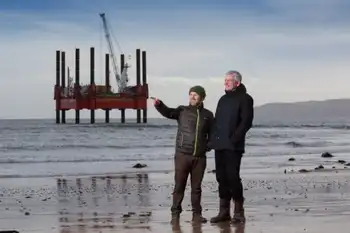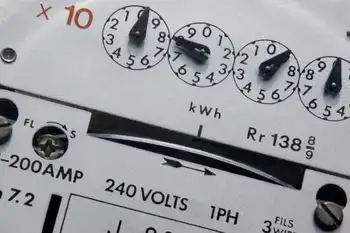Federal Government to buy greenhouse gas cuts
OTTAWA, ONTARIO - The ads may feature Rick Mercer but the government wasn't kidding about the One-Tonne Challenge.
Canada's latest climate change plan is going to shift much of the load of reducing greenhouse gas emissions away from the 700 companies that produce half of those gases — and closer to you.
The federal government's updated climate change plan, due to be released today, is counting on groups like small businesses, farmers, municipalities and the provinces to pull more weight in the struggle to meet Canada's Kyoto targets.
The old plan, presented in 2002, asked some heavy emitters, like oil and mining companies and steelmakers, to reduce greenhouse gas emissions by unreasonable amounts that would have put them at a competitive disadvantage.
Not anymore, said Industry Minister David Emerson.
"I think you will find that, in fact, (the plan) is not a threat to competitiveness," he said in a recent committee meeting. "If anything it's an opportunity for industry to become more competitive."
The updated plan being called "Moving Forward on Climate Change," will outline how Canada plans to meet its Kyoto targets by 2012. The government has pledged to cut Canada's greenhouse gas emissions to be 6 per cent below emissions in 1990 by 2008-2012.
Today's plan, estimated to cost taxpayers about $10 billion, will rely heavily on groups like communities and farmers to take financial incentives in return for cutting their own greenhouse gas emissions.
Since late last year, comedian Mercer has been appearing on TV ads promoting the One-Tonne Challenge asking consumers to cut emissions by using less energy, conserving water and reducing waste.
A $1-billion Climate Fund will pay groups $15 for each tonne of greenhouse gas they reduce.
That means if a farmer, for example, doesn't plow his fields (each plowing results in a release of carbon dioxide), the federal government will pay $15 for each tonne of greenhouse gas that is not emitted. Or, if a town switches its fleet of vehicles to hybrids, the government will pay $15 to the town for each tonne of greenhouse gas emission it saves.
Through human activities — driving a car, heating a home, buying manufactured goods — each Canadian emits, on average 5 tonnes of greenhouse gas a year, according to Environment Canada. One megatonne is equivalent to one million tonnes.
But cashing in on the Climate Fund is voluntary, so the gamble is that these small groups won't take the incentives the new plan is counting on.
"One does not know when you put incentives in place... exactly how much take-up you're going to get or how effective you're going to be," Emerson said yesterday. "There's always going to be uncertainty."
On top of the climate fund, the $250-million Partnership Fund will put money towards large-scale projects like phasing out coal-fired power plants in Ontario. Each province will be expected to match some portion of those federal dollars.
These two new federal funds, which were both announced in the last federal budget, help to make up for the break Project Green gives to the so-called large final emitters, such as oil and gas companies, electrical power generators, mining companies and heavy manufacturers like steel and aluminum.
Many of those companies loudly complained about the 2002 plan, which required them to cut a total 55 megatonnes of greenhouse gas per year.
But the plan that will be announced today will call on those industries to cut emissions by just 36 megatonnes.
That doesn't mean, however, that companies are required to invest in clean technology because they can opt to take one of the following financial hits instead:
Paying Canadian heavy emitters that have got clean technology for their excess emissions credits.
Buying emissions credits from overseas, given that they are the result of a real emissions reduction and not an economic collapse.
Investing in a technology investment fund that will be administered by the federal government to improve emissions technology down the road (This can count for a total of 9 megatonnes of offset emissions).
"We actually believe that companies will say, `first let's look at how we can improve our operations' and then decide to buy any credits,'" one of the sources said. "In the end it's going to be better for them to have the clean technology."
What the plan leaves unclear is how the government will set each company's target and how it will ensure each heavy-emitting company meets its target and what punitive measures will be taken for companies that don't.
Those specifications will become clearer in the months to come, the sources said.
In another apparent break for industry, the plan exempts any facilities, which are built using the best technology, from having to meet emissions targets for the first 10 years.
But Emerson admitted yesterday that even with this new plan, Canada is still going to fall short of meeting its Kyoto commitment, at least between now and 2010.
He expects Ottawa will still have to purchase emissions credits from overseas to make up for that shortfall.
The new plan resets that target at 270 megatonnes a year by 2012, up from the 240 megatonnes a year the 2002 plan projected.
Some experts have said that, due to Canada's economic growth, the country really should be aiming to cut 300 megatonnes a year by 2010 in order to cut emissions by 6 per cent of 1990 levels between 2008-2012.
"It's our current best estimate," one government source said, admitting that it's a more conceptual number than a real one.
"It's a useful concept in plotting our way forward to try and meet our target."
Related News

Ontario unveils new tax breaks, subsidized hydro plan to spur economic recovery from COVID-19
TORONTO - The Ontario government's latest plan to help businesses survive and recover from the COVID-19 pandemic includes a suite of new tax breaks for small businesses and $1.3 billion to subsidize electricity bills for industrial and commercial operations.
The new measures were announced Thursday as part of Ontario's 2020 budget, which sets new provincial records for both spending and deficit projections.
The government of Premier Doug Ford says the budget will address barriers impeding long-term growth, ensuring the province forges a path to a full recovery from the pandemic.
"When the pandemic is over, Ontario will come back with a vengeance, stronger…




